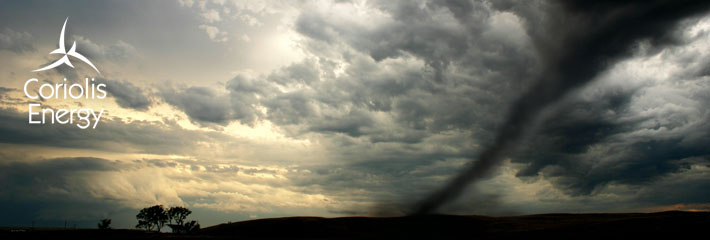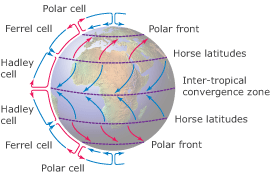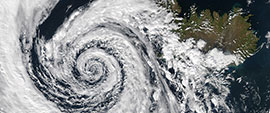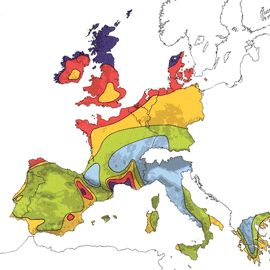

Wind And Its Origins
Wind is almost entirely caused by the effects of the sun which, each hour, delivers 175 million million watts of energy to the earth. This energy heats the planet’s surface, most intensively at the equator, which causes air to rise. This rising air creates an area of low pressure at the surface into which cooler air is sucked, and it is this flow of air that we know as “wind”.
In reality atmospheric circulation is much more complicated and, after rising at the equator air travels polewards. As it travels the air cools and eventually descends to the earth’s surface at about 30° latitude (north and south), from where it returns once again to the equator (a closed loop known as a Hadley Cell). Similar cells exist between 30° and 60° latitude (the Ferrel Cells) and between 60° latitude and each of the poles (the Polar Cells).
Within these cells, the flow of air is further impacted by the rotation of the earth or the "Coriolis Effect". This effect creates a sideways force which causes air to circulate anticlockwise around areas of low pressure in the northern hemisphere and clockwise in the southern hemisphere
While these mechanisms are responsible for the creation of winds at a global level, those at the level of an individual wind farm are in practice also impacted by more local effects. The most significant of these are:
| Influence | Effect |
Terrain |
Wind speeds up as it travels over hills and other topographical features, increasing the amount of energy available to be exploited. This is not all good however as it also creates turbulence which is not usually experienced in flatter landscapes. |
Coast |
During the day, the earth heats up more quickly than the sea. This causes air to rise over the land and in turn air to be “sucked in” from over the sea – an effect known as a sea breeze. During the night, the earth cools down more quickly than the sea and the effect is reversed. Overall, average wind speeds on the coast can be ~0.5 m/sec higher than those just a few kilometres inland. |
Due to a combination of its latitude (at the boundary of the Ferrel and Polar Cells) and the lack of landmass in the prevailing south-westerly wind direction, the UK is fortunate to have much higher wind speeds than those in continental Europe. Indeed Renewable UK has estimated that the UK has some 40% of the Europe’s total wind resource. Despite this the UK currently has only 4% of Europe’s total wind capacity and it is for these reasons that wind power in particular is expected to play such an important role in meeting the country's renewable energy targets.


European Wind Resources
European Wind Atlas, Risø National Laboratory

Average wind speed, open plain at 50m (m/s)
| >7.5 |
6.5-7.5 |
5.5-6.5 |
4.5-5.5 |
<4.5 |
